Five historic fragrance blends for homemade soaps include the Ancient Mediterranean Rose & Olive combination, Medieval Herb & Spice Apothecary mix, Victorian Lavender & Bergamot pairing, Colonial American Pine & Cedar Wood fusion, and Traditional Eastern Jasmine & Sandalwood harmony. Each blend offers unique benefits from different historical periods and cultures. You'll find these authentic scent combinations add both therapeutic properties and rich historical meaning to your handcrafted soap projects. The stories behind these timeless fragrances reveal even more fascinating connections.
Ancient Mediterranean Rose & Olive Blend
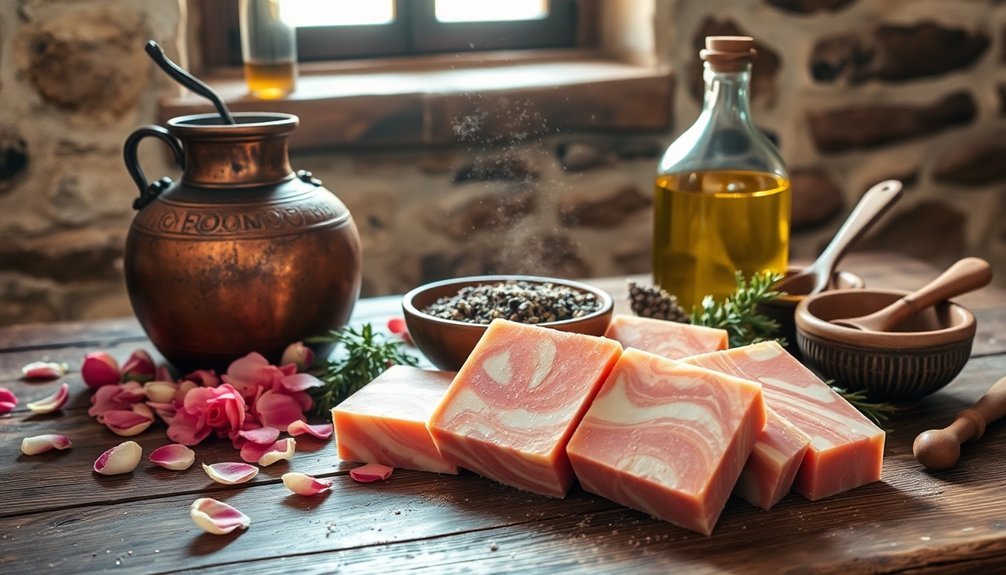
Royalty and commoners alike have treasured the combination of rose and olive oils for millennia. Dating back 5,000 years, this fragrance pairing captures the essence of Mediterranean beauty traditions where Rosa damascena's floral notes complement olive oil's earthy richness.
When blending fragrances for your homemade soap, this historic combination offers more than just exquisite scent. The essential oil of rose provides luxurious aromatherapy benefits while olive oil delivers powerful moisturizing properties.
Together, they create a soap that's both historically authentic and skin-nourishing. Your soap making will benefit from this anti-inflammatory blend that connects you to ancient wellness practices.
Medieval Herb & Spice Apothecary Mix
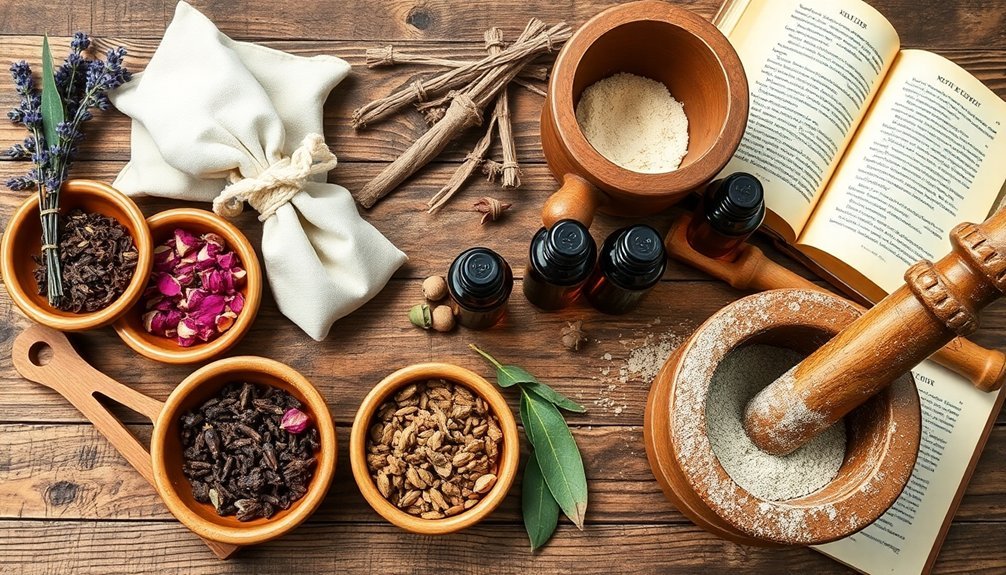
Herbalists throughout medieval Europe crafted complex aromatic blends that served both practical and mystical purposes. You'll capture this historical essence in your homemade soaps by combining traditional herbs and spices with modern fragrance oils. The aromatic quality of lavender, rosemary, and sage creates an authentic medieval experience while providing genuine medicinal properties.
When crafting your apothecary soap fragrance, consider these historical combinations:
- Chamomile and clove for a soothing yet warm undertone
- Sage and hyssop for purification and cleansing benefits
- Cinnamon and nutmeg for preservation and luxury appeal
These medieval blends weren't just pleasant—they were functional. Their antibacterial qualities improved hygiene in an era before modern sanitation.
Victorian Era Lavender & Bergamot Combinations
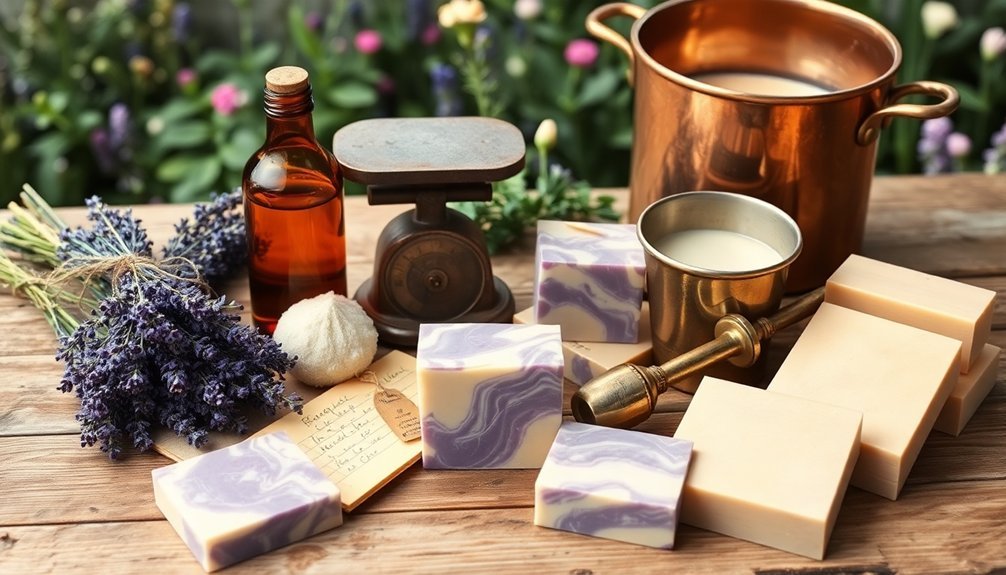
During Queen Victoria's reign, the sophisticated pairing of lavender and bergamot emerged as a signature fragrance blend that defined an era of elegance and refinement.
This harmonious combination wasn't just pleasing to the senses—Victorians valued it for its calming properties and ability to reduce anxiety in their bustling households.
You'll find that lavender contributed its sweet floral notes and natural antiseptic qualities, while bergamot added a rejuvenating citrus element that perfectly balanced the blend.
This aromatic duo became a staple in Victorian homemade soaps and personal care products.
To recreate this timeless fragrance in your own soap-making, combine these two essential oils in equal parts.
You'll be crafting more than just soap—you'll be connecting with the sophisticated aromatherapy practices of the Victorian era.
Colonial American Pine & Cedar Wood Fusion
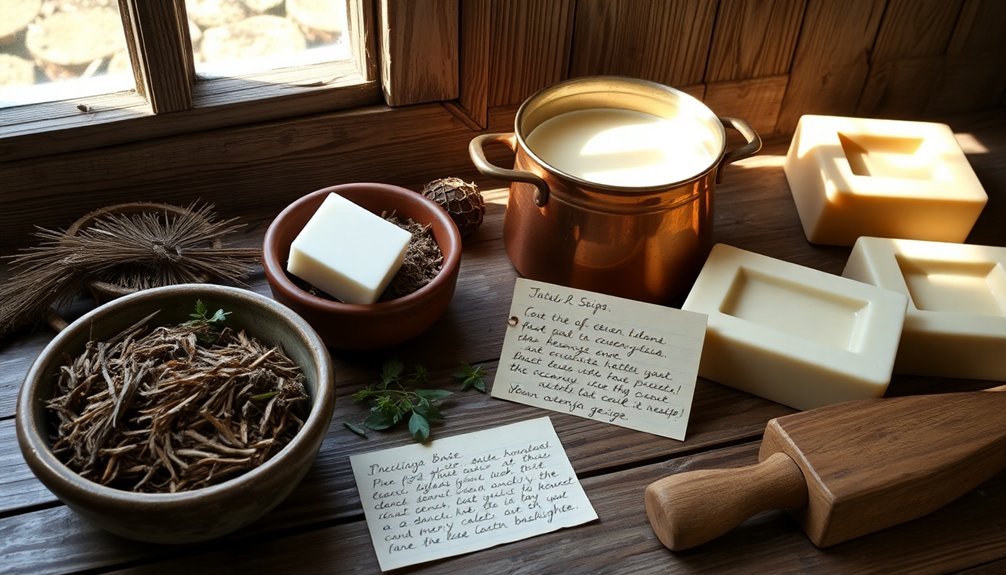
While Victorian England embraced lavender and bergamot, early American colonists turned to their surrounding wilderness for soap-making inspiration. The abundant pine and cedar forests provided not just building materials but also powerful natural fragrance sources for their homemade soaps.
When you combine pine essential oil with cedar wood in your aromatic blends, you're recreating a piece of colonial heritage. This pairing offers:
- Invigorating freshness from pine that cleanses both body and spirit
- Grounding stability from cedar wood that calms the mind
- A balanced scent profile that evokes America's forested landscapes
This historical fusion remains popular today for those seeking authentic natural fragrance experiences.
Traditional Eastern Jasmine & Sandalwood Harmony
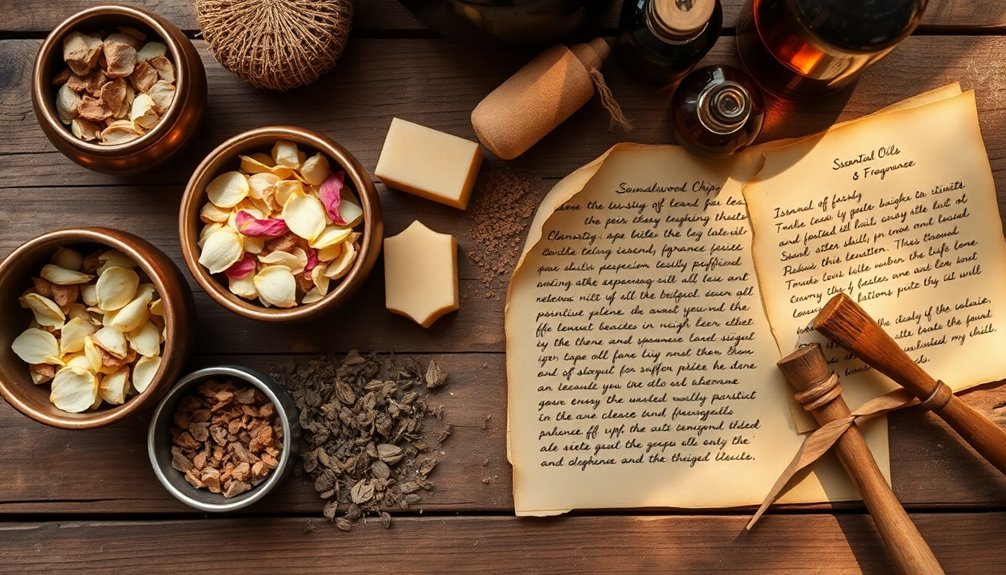
Throughout ancient Eastern civilizations, jasmine and sandalwood emerged as two of the most treasured aromatic elements in bathing and cleansing rituals. When you blend these ingredients for homemade soaps, you're tapping into thousands of years of fragrance wisdom.
Traditional eastern jasmine contributes a bright, sweet floral note that uplifts and soothes, while sandalwood anchors the blend with its rich, woody depth. This harmonious combination creates a luxurious scent that appeals universally, transcending gender preferences.
In your soap-making journey, you'll find this pairing particularly effective for creating products that evoke both romance and tranquility. The floral brightness perfectly balances the earthy warmth, resulting in a timeless fragrance blend that enhances the sensory experience of your handcrafted soaps while honoring ancient aromatic traditions.
Frequently Asked Questions
What Scents Go Well Together for Soap?
You'll find lavender with vanilla creates soothing soap, while eucalyptus and mint offer invigorating qualities. Try citrus with florals for balanced fragrances, or pair earthy patchouli with sweet vanilla to soften its boldness.
What Fragrance Blends Well Together?
You'll find lavender and vanilla blend beautifully together, as do citrus and mint combinations. Try pairing one dominant note with a complementary scent – like eucalyptus with spearmint or sandalwood with bergamot.
How to Make Homemade Soap Smell Good?
To make homemade soap smell good, you'll need quality fragrance oils in recognizable scents. Let your blended fragrances sit for days before using them, and keep notes of successful combinations for future batches.
What Essential Oils Should Not Be Used in Soap?
You shouldn't use irritating oils like cinnamon and clove, photosensitizing ones like wintergreen and eucalyptus, toxic oils like pennyroyal and rue, or short-lived fragrances like citrus oils in your soap recipes.
In Summary
These historic fragrance blends aren't just nostalgic—they're windows into our aromatic past. You'll notice how each culture developed scent combinations reflecting their unique values and available resources. Whether you're drawn to Mediterranean luxury, medieval mystique, Victorian elegance, American rustic charm, or Eastern tradition, you've now got the knowledge to infuse your handmade soaps with authentic historical essence. Happy crafting your aromatic journey through time!

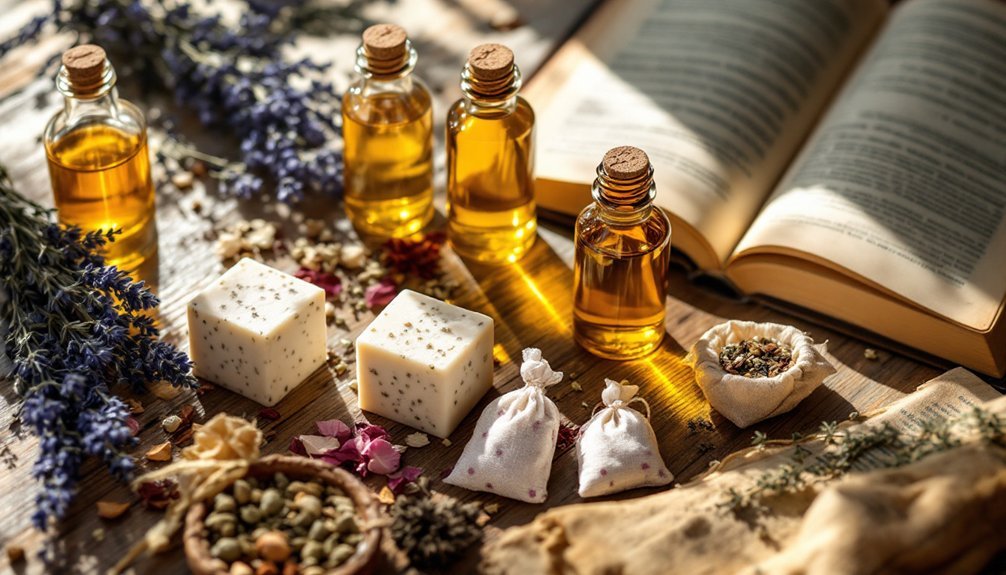



Leave a Reply